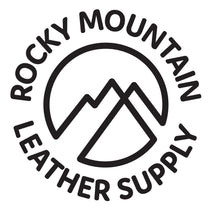Leather Characteristics
We wish every piece of leather could be absolutely perfect! Coming from a natural animal it makes it challenging and almost impossible. In the 1000's of hides we have seen without fail they all have, markings, dark and light spots, wrinkles, holes, scratches and more. The fact is this is the industry we work in. We want to lay out what our commitment to you is and some recommendations to help you purchase the leather.
Full Hides/Half Hides: Our full hides come in different cuts - sides, double shoulders, butts and whole hides. Each cut will have different characteristics inherent to the cut
- Sides will have the belly area that can be a little softer and show more wrinkle and stretching
- Double shoulders don't have the belly but do show neck wrinkles
- Butts are usually one of the cleanest cuts but the leather is very dense and tough
- Whole hides have a little bit of everything mentioned in this article. There is also the possibility of a hole in the hide due to the tannery removing brands, etc.
Panels: Because we cut our panels from the full hides we are somewhat limited to how we cut them efficiently. To keep the yield up which results in better cost for our customers there may be a small blemish in some panels. We try our best to cut around them, but occasionally a panel will have one.
What we promise is that the blemish (Scratch, hole or bite) will be no bigger than a quarter (2.5 cm) diameter and will be kept to the side of the panel and not in the center. This gives you some flexibility to work around it easily. Again please read the aniline leather info in each listing to understand what qualifies as normal for a hide and not a blemish. Blemishes are only bites, scratches, holes, cuts
Scratches, holes and bites: All leather hides usually have some combination of these, even the highest of grades. The tanneries grade a hide in its entirety and one small marking or characteristic doesn't effect the grade. We purchase top grades unless mentioned in the listing. Meaning these hides are their very best even with blemishes. If you are making a large item where you need big clean pieces we recommend as much as possible buying some form of pigmented leather. Big luxury brands almost exclusively do this to ensure a higher yield. If you are using aniline leathers this will be challenging. We recommend that your order extra leather to ensure you can achieve your results and contact us before hand to assist you.
Coloration: Each batch of leather production can have varying shades of color. The tanneries do their best to stay within a tight tolerance, but there is a tolerance. Pigmented leathers are more able to stay in tight tolerance, the aniline leathers though are tougher and will even change colors over time as they patina. Please contact us for a sample if you require tight tolerances.
Recommendations: There is some skill and mastery involved in working with leather and selecting how to cut a hide up. We have a few recommendations
- If you are making large items (bags) that need perfect large pieces please contact us about helping select the right hide that meets your specifications. We can also send a picture
- Those that are most successful optimizing yield on a leather hide do so by working blemishes into less visible areas of their project. Also they embrace the natural variation and showcase it. Some of the Japanese crafters are masters and showing the beauty of a naturalness from non perfect leather. Embracing this can make your products feel more handcrafted and not something mass produced.
- If you have any hesitation call us and we can help you get the right leather article for your project
